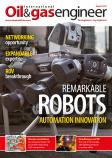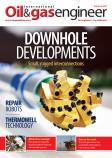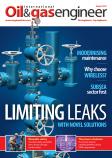Honeywell has announced a new connected gas detector that listens for leaks ultrasonically, complementing fixed gas detectors to better protect workers and facilities against deadly toxic and explosive gas leaks.
Gas leaks in well-ventilated areas disperse rapidly and may not be detected by conventional fixed point or open-path detectors, according to the United Kingdom’s Health and Safety Executive. Honeywell’s new Searchzone Sonik uses advanced ultrasonic technology, including a sealed, piezoelectric sensor unaffected by weather conditions and background noise, to provide instantaneous and reliable leak detection of high-pressure gas leaks.
Ultrasonic gas detectors are typically located high above the areas they monitor, making siting and servicing the devices challenging. Searchzone Sonik includes an ultrasonic test tool to help choose the proper location for the sensor and an easy-to-use mobile app for streamlined installation, operation and service from the safety of ground level.
“Keeping personnel and assets safe is the No. 1 priority for industrial plant operators, and advanced gas detection is a critical part of the solution,” said Carl Ritzberger, from Honeywell Industrial Safety. “Searchzone Sonik, combined with fixed-point and open-path gas detection, provides another level of protection in any environment, from harsh winter conditions to desert extremes. It incorporates advanced algorithms to respond only to the unique ultrasonic signature created by a high-pressure leak, and its solid-state sensor is sealed from moisture and contaminants to ensure accuracy and reliability.”
Honeywell’s Searchzone Sonik is suitable for applications requiring emergency shutdown and other automatic controls in the production, storage, processing and distribution sectors of the oil and gas industry. The gas detector is easy to install, commission and maintain through an app when paired with an intrinsically safe Android smart phone with Bluetooth connectivity.

















